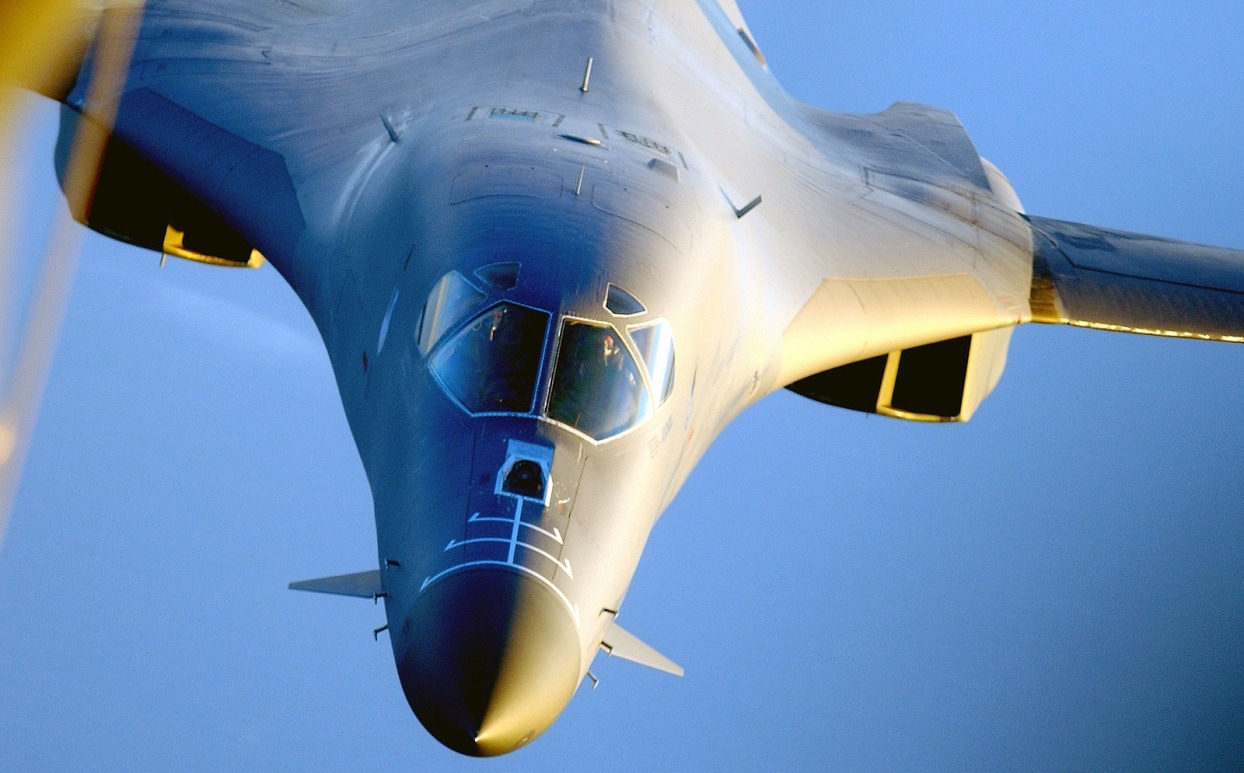This month, two American B-1B Lancer heavy bombers landed in Sweden.
In a statement, the U.S. Air Force detailed how the bombers’ landing strengthens the relationship between the two countries, in addition to fortifying the “collective defense of Europe.”
The ratification of Sweden’s NATO membership is still pending, making the appearance of American heavy bombers in the country even more significant.
The Rockwell B-1 Lancer joins the B-2 Spirit and B-52 Stratofortress to constitute the Air Force’s strategic bomber fleet. The platform has been around for more than two decades and is perhaps most recognizable by its ability to break the sound barrier, unlike its bomber counterparts. Due to this capability, the B-1 might be the noisiest American airframe that has ever flown.
A Brief History of the B-1B Lancer
In the 1960s, the Air Force first conceptualized a platform that could combine top speeds with a heavy payload. Specifically, the service wanted an airframe able to reach Mach-2.0 like the B-58 Hustler, while boasting the payload and range of the Stratofortress. Manufacturing group Rockwell International (currently a part of Boeing), was tasked to design and develop just such a formidable platform.
The program was temporarily canceled in the late 1970s when work on the subsequent B-2 stealth bomber began. By 1981, the B-1B program was reinstated, in part due to delays surrounding the B-2.
The slightly improved version initiated during the Reagan administration incorporated changes such as an increase in payload, an enhanced radar, and a reduction of the radar cross section, in addition to a reduction in maximum speed. At first, the Lancer was designed for nuclear capabilities, but this changed in the mid-1990s. As detailed by the Air Force, the B-1B bomber holds nearly 50 world records for payload, speed, range, and time of climb in its class. The bomber was first deployed during Operation Allied Force in 1999, when six airframes dropped 20% of the ordnance. The B-1B later was deployed during Operation Enduring Freedom and carried out frequent operations over Iraq and Afghanistan.
The Story of the ‘Star of Abilene’
When the B-1B was first delivered to Dyess Air Force Base near Abilene, Texas, in 1985, rumors insisted that the bomber was so loud, it would shatter windows throughout the town. A crowd of nearly 45,000 people gathered to watch the arrival of the new aircraft. According to the Aviation Geek Club, however, the Stair of Abilene could not make its debut until the following day due to an engine issue:
“The only other operational B-1B (82-0001) on standby at Edwards AFB, with a Star of Abilene decal applied flew in for the dedication instead. During the flight the decal ripped partway off because the recently placed decal had not had time to cure to the painted hull. According to Dyess AFB Memorial Museum and Linear Air Park Facebook page, no documentary evidence of this story was found, but several related individuals reported the story.”
Maya Carlin, a Senior Editor for 19FortyFive, is an analyst with the Center for Security Policy and a former Anna Sobol Levy Fellow at IDC Herzliya in Israel. She has by-lines in many publications, including The National Interest, Jerusalem Post, and Times of Israel. You can follow her on Twitter: @MayaCarlin.
From 19FortyFive
A Russian Submarine Accidently ‘Destroyed Itself’
Total Massacre’: Ukraine Footage Shows Russian Cruise Missile Shipment Attacked

